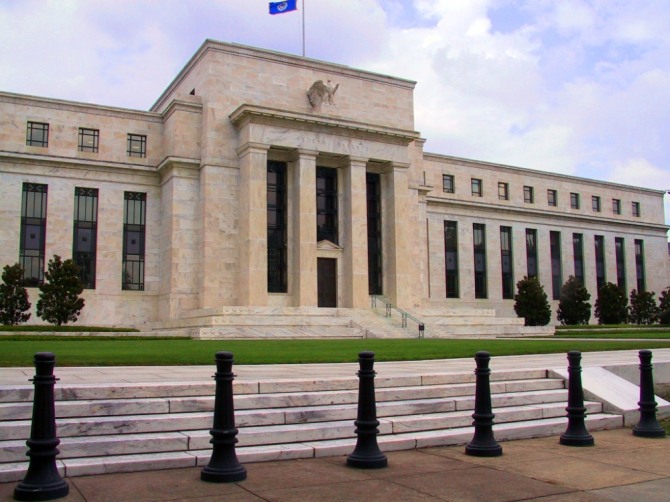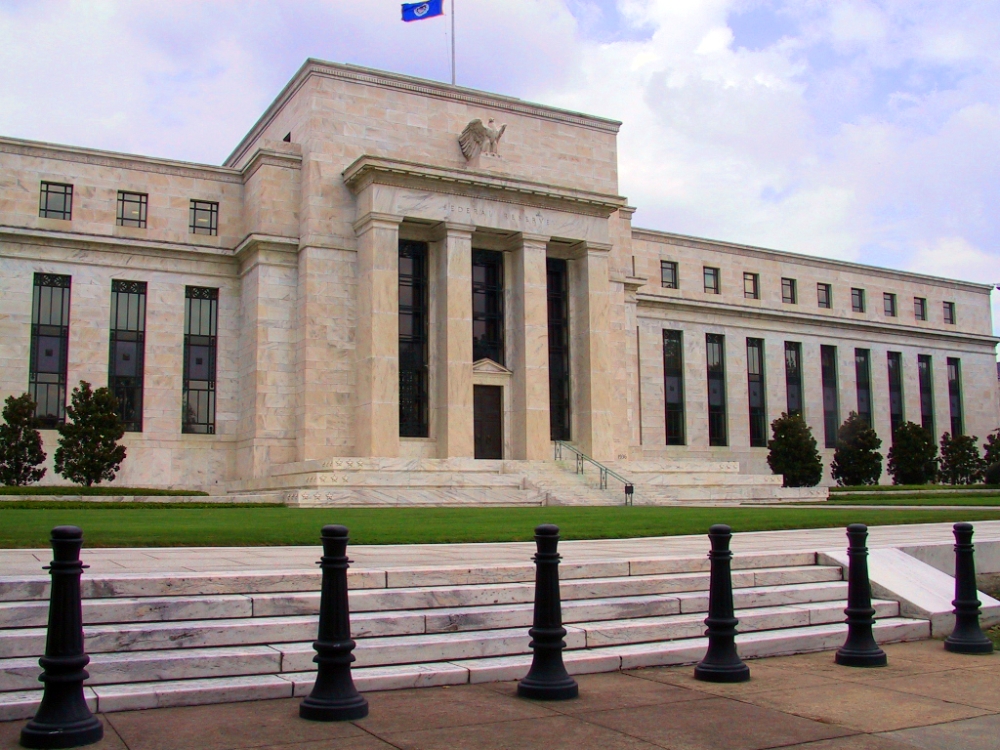뉴욕증시 테이퍼링 1월 종료설도 사실무근
 이미지 확대보기
이미지 확대보기15일 뉴욕증시에 따르면 윌리엄스 총재는 미국외교협회(CFR) 주최 행사에 참석 "통화 완화를 줄이는 테이퍼링 끝나가고 있으며 다음 조치는 기준금리를 현재의 매우 낮은 수준에서 좀 더 정상적인 수준까지 점진적으로 올리는 것"이라고 말했다. 그는 특히 "노동시장이 매우 강하다는 분명한 신호들을 고려할 때 FOMC는 그 절차를 시작하기 위한 결정에 서서히 다가서고 있다"고 강조했다. 윌리엄스 총재는 그러나 연내 금리인상의 횟수나 첫 금리인상 시점 등에 관한 구체적인 언급을 삼갔다.
미국 FOMC에서 뉴욕 연방준비은행 총재과 갖는 위상은 막강하다. 12개 이젹 연준 총재 중에서 뉴욕 총재만은 FOMC 투표권이 영구 보장된다. 존 윌리엄스는 재롬파우러 연준 의장의 최 측근이기도 하다. 윌리엄스 총재의 이날 금리인상 언급은 제롬파월 의장과 레이얼 브레이너드 부의장이 최근 의회 상원 인준 청문회에서 인플레이션 억제를 위한 금리인상 필요성 등을 강조한 직후에 나왔다. 제임스 불러드 세인트루이스 연은 총재와 패트릭 하커 필라델피아 연은 총재도 3월 금리인상 시작과 연내 4회 인상 가능성을 잇달아 거론했다.
마켓 워치는 윌리엄스 총재의 이같은 '점진적 인상' 발언은 다른 연준 위원들보다 훨씬 비둘기적 신호라고 평가했다.
미국 상무부에 따르면 12월 소매판매는 1.9% 감소한 6천268억 달러로 집계됐다. 12월 소매판매는 뉴욕증시 컨센서스인 0.1% 감소보다 더 크게 줄었다. 11월 소매판매는 0.3% 증가에서 0.2% 증가로 수정됐다. 12월 산업생산(계절조정)도 전월보다 0.1% 줄었다. 1월 미시간대 소비자태도지수 예비치도 68.8로 전월의 70.6에서 하락했다. 오미크론 확산과 인플레이션 우려 속에 소비 심리가 전반적으로 악화한 것으로 풀이된다.
미국 최대 은행인 JP모건의 지난해 4분기 주당 순이익은 3.33달러로 시장의 예상치인 3.01달러를 웃돌았다. 순이익은 지난해 같은 기간보다는 14%가량 줄었다. 씨티그룹의 4분기 순이익도 주당 1.46달러로 애널리스트 예상치 1.39달러를 웃돌았으나 이는 지난해 같은 기간보다는 26% 줄어든 것이다. 웰스파고의 4분기 순이익은 1.15달러로 애널리스트 예상치인 1.13달러를 웃돌았다. 그 결과로 JP모건과 씨티그룹의 주가는 6%와 1% 이상 하락했다. 웰스파고의 주가는 3% 이상 상승했다. 가상화폐 도지코인의 가격은 일론 머스크 테슬라 최고경영자(CEO)가 자사 일부 상품을 도지코인으로 살 수 있게 됐다고 밝히면서 15% 이상 올랐다. 테슬라의 주가는 사이버 트럭 생산이 내년 초로 미뤄질 수도 있다는 보도에도 1% 이상 올랐다. 미국 시카고상품거래소(CME) 페드워치에 따르면 연방기금(FF) 금리 선물 시장은 올해 3월 연준이 금리를 인상할 가능성을 86.1%로 내다봤다. 미국 시카고옵션거래소(CBOE)에서 변동성 지수(VIX)는 전장보다 1.12포인트(5.51%) 하락한 19.19를 기록했다.
다음은 윌리엄스 총재 금리인상 발언 전문/ John C. Williams, President and Chief Executive Officer Remarks at Council on Foreign Relations (delivered via videoconference)As prepared for delivery
Good morning, everyone, and Happy New Year. Thank you, Charles, for that introduction. And thanks to Richard Haass for the opportunity to speak with the members of the Council on Foreign Relations once again.
The story of the pandemic is a complicated one. It is writing itself as we live it, and the storyline has been far from predictable. This is, first and foremost, a health crisis. The unusual and extraordinary nature of the situation means that circumstances are constantly evolving.
For the economy, this has meant that what we’ve experienced is unlike any recession or recovery we’ve seen—or read about—in the past. While there have been significant improvements in the overall economy, setbacks persist in some areas, and new challenges have appeared.
I’ll always take an opportunity to quote something from the Lord of the Rings canon, so I’ll continue with the story analogy and say that for many people, these past few weeks have felt like we’ve been “There and Back Again.”
We again find ourselves in a period of extraordinary difficulty. The emergence and rapid spread of the Omicron variant in the United States and around the world are resulting in new peaks of COVID infections and hospitalizations, as well as severe strains on the healthcare and essential services workforce. This is a reminder that the path of economic recovery continues to be driven by the course of the virus.
In my remarks this morning, I’ll share more about what we’re seeing in the incoming data and how it relates to the economic picture in the United States and the world more broadly. I’ll also highlight the significant progress we’ve seen in the labor market and my outlook for inflation. Finally, I’ll discuss the Federal Reserve’s recent policy actions and what they mean for the future.
Before I proceed, I need to give the standard Fed disclaimer that the views I express today are mine alone and do not necessarily reflect those of the Federal Open Market Committee (FOMC) or others in the Federal Reserve System.
Economic Outlook
When I look at the economy, it is through the lens of the Federal Reserve’s “dual mandate.” These are two goals set by Congress: maximum employment and price stability. Given these goals, my focus is to study and understand the wide range of developments that affect employment, unemployment, and inflation as they play out in real time.
As we start a new year, it’s worth highlighting the key economic developments of last year, which were defined by a very strong recovery, both here and abroad. Although we don’t have all the data yet, I expect that U.S. inflation-adjusted, or real, gross domestic product (GDP) increased by about 5-1/2 percent last year, which would be the strongest growth rate between fourth quarters in over 35 years.
The economic snap-back here and abroad has led to global supply-chain bottlenecks and imbalances between supply and demand that have contributed to a sharp rise in inflation. Inflation in the United States, based on the personal consumption expenditures price index, will likely exceed 5 percent in 2021, and inflation rates are elevated in many other countries, too.
Looking ahead, I expect the current Omicron wave to slow growth in the next few months as people once again pull back from contact-intensive activities. I also expect that the Omicron wave will temporarily prolong and intensify labor supply challenges and supply-chain bottlenecks that we have been experiencing. Current staffing challenges for essential service workers in the healthcare, transportation, and education sectors will likely have a ripple effect too. But, once the Omicron wave subsides, the economy should return to a solid growth trajectory and these supply constraints on the economy should ebb over time.
Considering the effects of Omicron on the economy in the first part of the year, I expect real GDP to increase around 3-½ percent this year. While this is not quite the blockbuster growth we saw in 2021, it is still well above its long-run trend and supportive of continued improvement in the labor market. Of course, experience has taught us not to be overly confident in predictions about COVID and its effects on the economy, and uncertainty around the economic outlook remains high.
The Labor Market
Now I’ll turn to the employment side of our mandate, where the picture improved dramatically over the past year. About 6-1/2 million jobs were added last year, and the unemployment rate plummeted by 2.8 percentage points. In fact, with the unemployment rate now at 3.9 percent, we have retraced 96 percent of the COVID recession rise in less than two years. This is lightyears faster than the more than seven years it took for unemployment to retrace to the same degree after the global financial crisis. With the economy registering solid growth, I expect the unemployment rate will continue to come down further to 3-½ percent this year.
The strength in the labor market is seen in a wide variety of indicators, including job openings, quits, and wage growth. The labor market has been especially robust in recent months for workers at the bottom of the wage distribution. And female labor force participation and employment have improved, especially for women with young children.
Inflation and Supply-Chain Challenges
One of the foremost concerns surrounding the outlook is inflation, which rose considerably last year.
There are two main contributors to the current high inflation: very strong demand, especially for goods, and supply bottlenecks. Both have been prevalent throughout the pandemic. The shutdown of factories—particularly those in Asia—and widespread lockdowns led to disruptions to logistics networks, elevated shipping costs, and prolonged delivery times. A new index created by New York Fed research staff shows that global supply-chain pressures shot up last year, reaching historically high levels.1
These challenges are not just top of mind for companies selling their goods or consumers waiting for their purchases to be delivered. Elevated prices have real life consequences for so many, particularly for people who are struggling to cover the rising costs of food, housing, and transportation.
The circumstances we are facing today are unlike anything we’ve experienced in the past. Typical historical episodes cannot be used as reference points for current conditions. As an example, the very large increases in prices that we see today are primarily for durable goods. This is a striking turnaround from the past 25 years when those prices had been trending lower. In contrast, even with the recent increases, prices on services and non-durable goods are now fairly close to their longer-run trends. And, even though the Omicron wave is posing new obstacles, some supply issues are starting to work themselves out as the economy adjusts to the changing circumstances.
Just as the pandemic has followed its own script, I anticipate that the dynamics of inflation will also be different than previous cycles. With growth slowing and supply constraints gradually being resolved, I expect inflation to drop to around 2-1/2 percent this year, much closer to the FOMC’s 2 percent longer-run goal. And looking further ahead, I expect inflation to get close to 2 percent in 2023.
Policy Actions
These developments in the labor market and for inflation inform the Federal Reserve’s policy response and recent actions. In its December 2021 statement, the FOMC said that it would keep the target range for the federal funds rate at 0 to ¼ percent.2 With inflation having exceeded 2 percent for some time, the FOMC said it expects it will be appropriate to maintain this target range until labor market conditions have reached levels consistent with the FOMC’s assessments of maximum employment.
Because of inflation developments and the notable improvement in the labor market, the FOMC also decided to reduce the monthly pace of its net asset purchases.
With our actions, we have started the process of adjusting the stance of monetary policy away from one of providing maximum support for the economy. This movement in policy reflects the gains the economy has made since the beginning of the pandemic and the evolution of the risks to the achievement of our goals.
The next step in reducing monetary accommodation to the economy will be to gradually bring the target range for the federal funds rate from its current very-low level back to more normal levels. Given the clear signs of a very strong labor market, we are approaching a decision to get that process underway. The timing of such decisions will be based on a careful consideration of a wide range of data and information, with a clear eye on our maximum employment and price stability goals.
Conclusion
As we turn a page on the new year, it’s clear that we have not yet reached the end of this pandemic story. But despite the challenges, I am hopeful of a continued strong recovery this year.
미국 노동시장이 '완전고용'에 근접했으며 이는 새로운 인플레이션 압력으로 작용할 위험이 있다고 월스트리트저널(WSJ)이 13일(현지시간) 보도했다.
완전고용은 일자리를 찾는 사람과 일자리의 숫자가 비슷해 누구나 원하면 일자리를 가질 수 있는 이상적인 상황이다. 이 수준을 넘으면 임금 인상 압력이 생기고 고용주는 이를 가격 인상으로 소비자에게 전가해 물가가 오르게 된다.
신문에 따르면 일부 경제전문가들은 미국 실업률이 내려가고 임금 상승은 가팔라지고 있다면서 미국이 완전고용에 가까워지고 있거나 이미 도달했다고 진단하고 있다.
최근 미 노동부 통계에 따르면 지난달 실업률은 4% 아래로 떨어져 팬데믹(전염병의 세계적 대유행) 이후 최저인 3.9%를 기록했다. 1년 전 실업률은 6.7%였다.
WSJ 설문조사 결과 전문가들은 실업률이 연말 3.5%까지 내려갈 것으로 전망했다.
지난달 일자리는 19만9천 개 증가하는 데 그쳐 지난해 월평균의 절반에도 못 미쳤다. 지난달 시간당 임금은 1년 전보다 4.7% 올랐다.
이 같은 통계는 고용할만한 노동자가 많이 남아있지 않다는 것을 보여준다.
지난달 미국 소비자물가 상승률이 7%로 39년 만에 최고를 찍은 상황은 완전고용의 요건에 부합하는 것으로 보인다고 WSJ은 지적했다.
미국경제 전문가인 손성원 미 로욜라 메리마운트대학 교수는 미국이 완전고용 이상의 수준이라고 분석했다.
손 교수는 고임금이 고물가의 한 원인이 된다는 점을 지적했다. 그러면서 지난해 멕시코 음식 체인 치포틀레가 높아진 노동비용 때문에 제품 가격을 인상했다는 것을 사례로 들었다.
연준도 전날 공개한 경기동향 보고서 베이지북에서 미 동부 연안 일부 지역의 많은 기업이 임금을 올리고 상승한 노동 비용을 최종 가격에 반영시켰다고 밝혔다.
손 교수는 대부분 노동자에게 지난 1년간 소비자 물가는 급여보다 많이 올랐으며, 이제 이들은 고용주에게 임금을 인플레이션 수준만큼 올려달라고 압박하고 있다고 설명했다.
그 결과 기업들은 이익 마진을 유지하기 위해 가격을 더 올리게 된다는 것이다.
손 교수는 올해 물가가 3∼4% 오르고 임금 상승률은 이보다 높은 5∼6%가 될 것으로 예상했다. 그는 "임금과 물가의 악순환이 시작됐다"면서 "일단 시작되면 스스로 멈추지 않을 것"이라고 말했다.
이론적으로 임금이 노동자 생산성보다 빠르게 높아지면 물가가 오르거나 기업의 이익 마진이 줄어든다.
미국은행협회는 올해 임금이 4.5∼5% 상승하고 기업들은 기술투자로 대응할 것으로 전망했다. 이 같은 투자는 생산성을 높여 기업들이 비용을 낮출 수 있게 해준다. 은행협회는 공급망 병목 현상 완화로 올해 인플레이션이 3%로 낮아질 것이라고 기대했다.
완전고용 달성과 관련한 논쟁에서 눈여겨봐야 할 것은 노동력 규모다. 지난달 미국의 노동력 규모는 팬데믹 전보다 1.4%(290만명) 줄었다.
세인트루이스 연방준비은행은 지난해 8월까지 240만명이 팬데믹으로 조기 은퇴했다고 추산했다.
손 교수는 일부 노동자들이 집에 머물면서 배우자가 일하는 동안 자신은 아이를 돌보는 길을 택했다고 말했다.
이어 "그들은 취업에 대한 자세가 완전히 다르다"면서 "일터로 복귀하는 것을 서두르지 않을 것"이라고 덧붙였다.
하지만 노동시장에 아직 고용 증가 여력이 있으며 현재의 인플레이션에는 임금보다 다른 요인이 크다는 견해도 있다.
제롬 파월 연방준비제도(Fed·연준) 의장은 물가 상승률이 7%로 높아진 것은 노동시장 과열과 임금 상승 때문이 아니라 공급망 혼란과 부양책에 따른 수요 증가로 상품이 부족하기 때문이라고 말했다.
파월 의장은 고용 시장을 위해서도 물가 억제에 초점을 맞춰야 한다는 점을 역설했다. 그는 "최대 고용을 달성하려면 물가 안정이 필요하다"고 말했다.
일부 전문가는 미국이 팬데믹 직전보다 360만 개의 일자리가 감소했다고 말했다. 그들은 부자연스럽게 낮은 실업률은 팬데믹으로 구직자가 줄었기 때문이며, 코로나19 상황이 좋아지고 가계의 보유 현금이 줄어들면 노동자들이 복귀할 것이라고 기대했다.
김재희 글로벌이코노믹 기자 tiger8280@g-enews.com
[알림] 본 기사는 투자판단의 참고용이며, 이를 근거로 한 투자손실에 대한 책임은 없습니다.










































